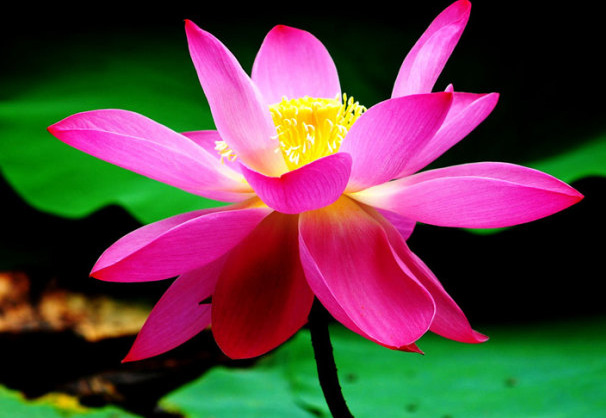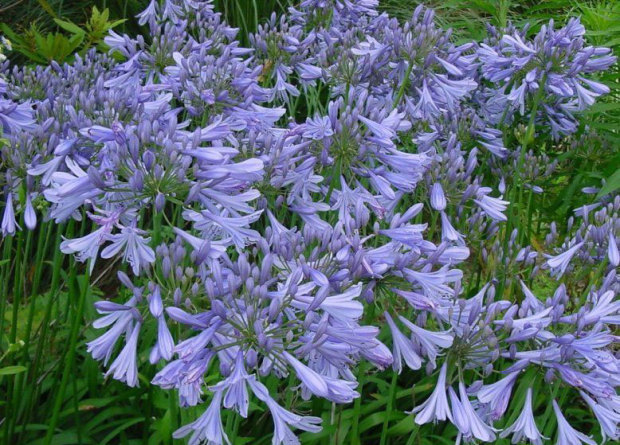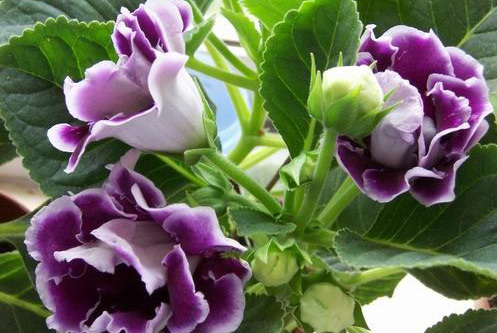Culture and conservation methods of lotus
"the nature of hibiscus in the water is strong, born in the sludge, the beads roll on the leaves more chic, and the whole body has a wide range of uses." This vivid limerick, the praise of the lotus is very appropriate, showing the strong character of the lotus in the mud. With its tall and straight leaf stalks against the disc-shaped leaves, set off against the beautiful fragrance of flowers, attract bees and butterflies to dance, dress up the quiet water surface lively and lively, in the morning dew, the smooth leaves on countless silver bright droplets, rolling against the rising sun with the wind, even more chic. Lotus is not only a good ornamental flower, its underground stem (lotus root) is excellent food, lotus stem, lotus leaf, lotus seed, lotus room are all medicinal materials, therefore, it is said that its whole body does not waste, a wide range of uses, but also worthy of its reputation. There are many varieties of lotus gardening, which can be cultivated not only in a large area on the lake surface in the park, but also in a large water tank in the courtyard. Among the most precious varieties, there is a kind of "bowl" with small leaves, small flowers and small plants. It can be cultivated in a bowl of 30cm in diameter. It is kept in the sunny place indoors all the year round, small and exquisite, elegant and chic, and it can also be regarded as a bonsai with a unique style among ornamental flowers.

Lotus, also known as lotus, is also called Fuqu in ancient books, and poets often call it hibiscus out of the water. It is a perennial perennial aquatic herb of Nymphaeaceae. Native to the temperate zone of Asia to the tropics, it is widely cultivated in the north and south of China, and has a long history of cultivation. Highly adaptable, but afraid of cold and freezing, like strong light. Ramet and sowing can be propagated, and the method of dividing the underground stem is commonly used in large area production, that is, cutting the underground stem and retaining at least three segments for planting separately. Good horticultural varieties can also be sowed and propagated. The seed coat of lotus seed is thick and hard, and it is not easy to absorb water. First, file the seed coat to speed up water absorption, soak it in warm water for a day and night, after the seed coat is swollen, gently peel the seed coat in mud water, when the temperature is about 20 degrees Celsius, it can sprout in about 1 week, and then a single plant can be planted in a pot, and then bloom after about 2 years. For example, if the seedlings are planted in a pond, take the seedlings and tie them with a piece of string and throw them into the water to help them take root at the bottom of the water and go deep into the mud. The culture method of how to cultivate lotus
Lotus, with its practicality into people's work and life, how to cultivate lotus? Next, let's share with you the culture methods of lotus.
1, lotus seed propagation: break the seed coat to soak seeds and raise seedlings, keep the water clear, the temperature is about 15 degrees, often change water, sprout in about a week, take root and transplant two weeks later, cut one plant in each pot, the water layer should be shallow, do not drown the lotus leaves in water. About 90% can blossom in that year, but not many in that year.
2. Propagation of lotus underground stem: the rhizome is buried in about 10 cm of silt, with a low head and a high tail. The tail is half warped to keep the end of the lotus root from getting into the water. After planting, put the pot in the sun to make the soil crack on the surface, so that the lotus root is completely bonded to the soil, then add a small amount of water, wait for the bud to grow, gradually deepen the water level, and finally maintain the 3m / 5cm water layer.
3. Water management: summer is the peak of lotus growth, and the demand for water is also the largest, so we should pay attention to the whole summer can not be dehydrated in the cylinder basin. The rainfall in the plum rain season is more concentrated, and the water level of the lotus planted in the pond can not submerge the standing leaves. Attention should be paid to timely drainage to avoid the destruction of the lotus.
4. Fertilizer management: Lotus likes fertilizer, but too much fertilizer will burn seedlings, so thin fertilizer should be applied frequently. Summer is the flowering stage of lotus, and the demand for fertilizer is greater than that at seedling stage. If the lotus leaves are yellow and thin and there are no disease spots after the flower buds come out of water, indicating that there is a lack of fertilizer, phosphorus and potassium fertilizer should be added in time, and fertilizer can be applied every 15 to 20 days (cake fertilizer or compound fertilizer). Pot planting lotus depending on the size of the basin, the fertilizer is stuffed into the mud in the middle of the basin and allowed to be released slowly.
5. Light management: Lotus is a long-sunshine plant, and there should be sufficient light in the cultivation site. The row spacing of potted lotus plants should be appropriate, and overcrowded plants should be thinner and taller with fewer standing leaves. When growing lotus in containers such as vats, pots, bowls, etc., the lotus should be placed in a place with sufficient light or moved outside every day to receive light. After the lotus bud appears, the light should be not less than 4 hours a day, otherwise the plant will appear leaf color yellowing, bud withering and so on.
The culture method of arrow lotus: potted arrow lotus picture, the culture method of arrow lotus
So that the arrow lotus has a wide variety of flowers and colors, light and delicate posture, bright colors and strong aroma, which is deeply loved by people. The cultivation of arrow lotus is mainly potted ornamental, using a variety of varieties to match, the ornamental effect is more outstanding. Whether it is used to decorate the balcony of the living room and study, or in front of the porch leading to the garden, it can be called an excellent potted flower with excellent color, appearance and fragrance.
- Prev

Cultivation and culture methods of Baizi orchid (Baizi lotus)
Baizi orchid gets its name because of its many flowers and seeds, and its leaves are close to orchid, so it is also called purple orchid because its posture is close to that of gentleman orchid, but it is also called purple orchid; Shanghai, Hangzhou and other Jiangnan areas are also called Baizilian. Perennial evergreen rhizomatous herbs, leaves banded, ca. 80 cm long, basal, arranged in two rows
- Next

Cultivation and culture methods of paulownia
In the hot summer, many people's favorite potted flowers can not stand the heat, some half-dead poor growth, some simply fallen leaves into dormancy. However, the big paulownia from tropical South America and Brazil is not afraid of the heat and heat. It can not only fight the high temperature and the heat, but also grow proudly.
Related
- Fuxing push coffee new agricultural production and marketing class: lack of small-scale processing plants
- Jujube rice field leisure farm deep ploughing Yilan for five years to create a space for organic food and play
- Nongyu Farm-A trial of organic papaya for brave women with advanced technology
- Four points for attention in the prevention and control of diseases and insect pests of edible fungi
- How to add nutrient solution to Edible Fungi
- Is there any good way to control edible fungus mites?
- Open Inoculation Technology of Edible Fungi
- Is there any clever way to use fertilizer for edible fungus in winter?
- What agents are used to kill the pathogens of edible fungi in the mushroom shed?
- Rapid drying of Edible Fungi

